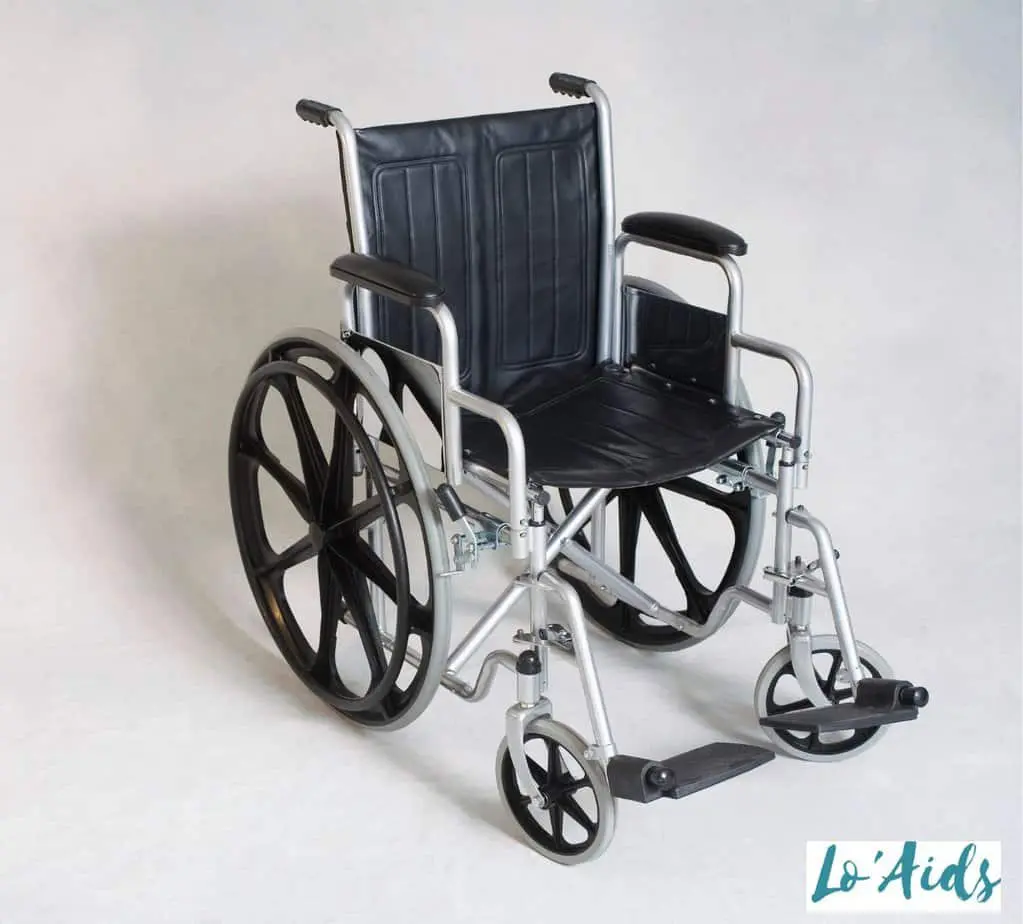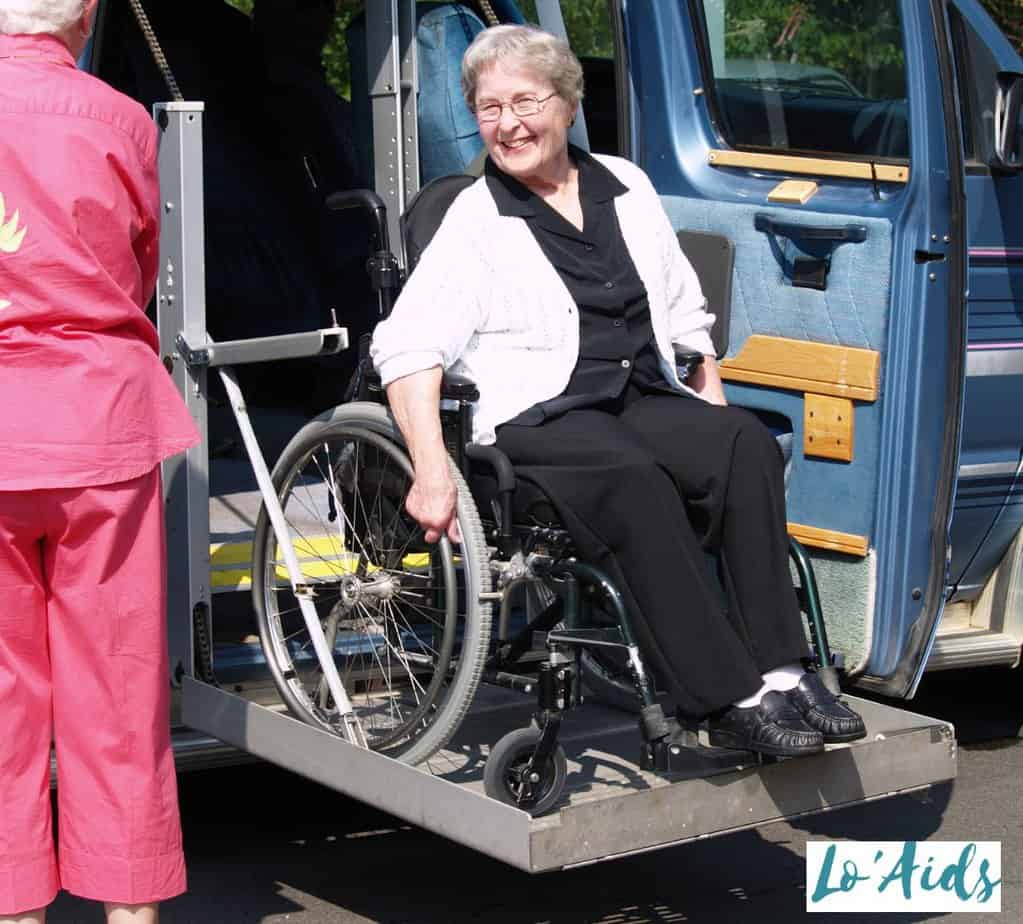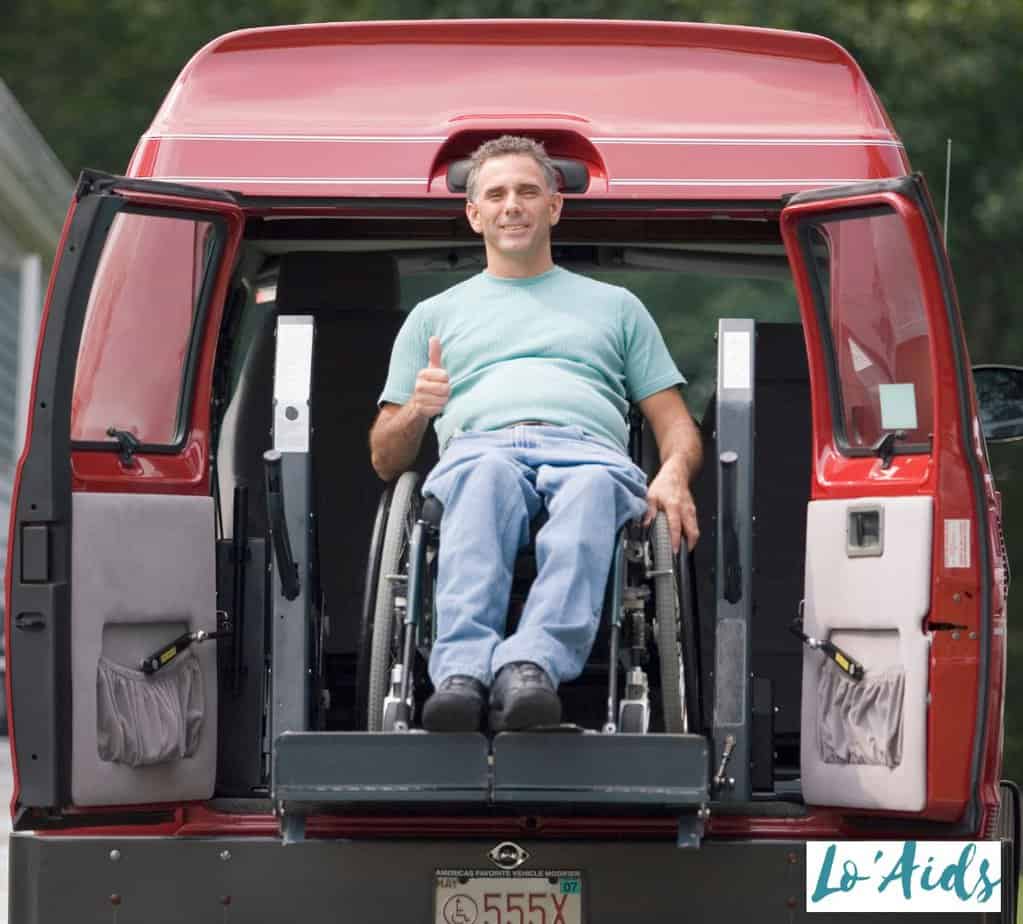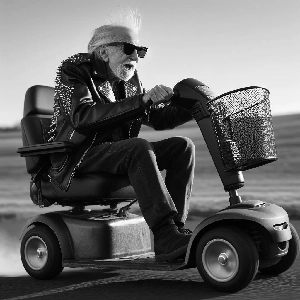Are you wondering about using a wheelchair for back pain?
I was in a similar situation a few years ago and was forced to use a chair to move around to perform my daily activities.
So, I’m here to talk about using a one for back pain and give you some tips to deal with chair-related lumbar spine discomfort.
Just keep reading.
Table of Contents
Key Takeaways
- Sitting in a wheelchair for prolonged periods can make common back conditions worse.
- Poor posture is among the most common reasons for lumbar spine pain in chair users.
- Always consult a professional about whether a wheelchair is the right walking aid for your chronic pain.
What Causes Back Pain?
Before discussing using a chair for back pain, let’s see the most common reasons for lumbar discomfort.
Usually, back pain is the result of strain, sprains, or injuries when you overstretch your muscles, tendons, and ligaments, lifting a heavy object, bending, or twisting.
Addressing how to fix lower back pain when bending over is crucial, as this is a common trigger for discomfort and can significantly impact daily activities.
Recognizing and amending poor bending habits, along with practicing appropriate lifting techniques, can contribute to managing and preventing this type of pain.

Poor posture also plays a role in back pain. As Vijay Vad from Spine Health says, “Unsupported postures cause the loads on your spine to disperse incorrectly, weakening the tissues in your lower back.” (1)
However, back discomfort can also indicate an underlying issue, such as herniated disc, sciatica, ankylosing spondylitis, infection, cancer, or kidney stones.
So, should you consider using a wheelchair for back pain? And is back pain related to power or manual chair use? Let’s find out!
Can Wheelchair Help with Back Pain?
My herniated disc was so severe I could barely move, and I had to rely on a chair to get from point A to point B. It didn’t lessen my pain, but it was easier to perform daily activities.
Still, the doctor cautioned me about using a wheelchair for back pain because sitting for prolonged periods could aggravate the condition.
So, should you use a chair for back pain? It depends. If you’re hoping to reduce chronic pain, it’s not the best option, especially if the discomfort is due to an infection or a pressed nerve.

Surprisingly, lying down is better for your back than sitting . That’s because when you lie down, your spine is neutral, so there’s no extra pressure.
But a chair can benefit you in another way. Some spine conditions cause leg numbness and weakness, reducing mobility and quality of life.
So you can use a wheelchair to stay active and independent. It’s also an excellent option when you can’t walk long distances due to balance issues or fatigue.
In such cases, a recommended solution to support your back while using a chair is the STOT SPORTS BACK BRACE.
This brace can help provide the necessary support and stabilization for your spine, reducing pressure and aiding in maintaining a correct posture.
By using a back brace, you may find an improvement in comfort and a reduction in back pain, enabling you to stay active and independent for longer periods.
But can wheelchair use cause back pain? You’d be surprised!
Can Wheelchairs Cause Pain in the Lumbar Region?
According to studies, the risk of lumbar back pain is five times higher in users than in the rest of the population. (2)
The explanation is simple. Many permanent wheelchair users are in a seated position all day long, so they tend to slump back and slide forward in an attempt to get comfortable.
As Jennifer Hastings, a physical therapist, explains,
“You can’t sit that way all day without eventually developing posture-related pain problems.” (3)
Moreover, self-propelling manual chair users do 3,000 pushes per day! This repetitive motion strains the upper body muscles, shoulders, and neck, leading to back pain and decreased range of motion.
Interestingly, a study also shows chair users are exposed to whole-body vibrations (WBV) above the recommended safe zone. And WBVs are an occupation risk factor for back pain. (4)
And you shouldn’t forget about uneven surfaces. You need more strength to overcome such obstacles, which leads to additional muscle strain and increases the whole-body vibrations.
But what about caregivers who push a chair around? Are they at risk of back pain?
Can Pushing a Wheelchair Cause Back Pain?
Pushing a wheelchair can cause back, wrist, and shoulder pain. It’s easy to strain your muscles, especially when going over uneven surfaces or pushing a patient with excess body weight.

Moreover, according to a study, participants who pushed a simulated chair used 20% more of the recommended force. That’s a risk factor for back pain. (5)
And now, let’s talk about how you can minimize the risk of pain when using a wheelchair.
5 Tips on How to Prevent Back Pain When Using a Wheelchair
A proper seated posture is vital for preventing chronic spinal pain in permanent wheelchair users. So, here are a couple of tips to help you find a safe and comfortable position.
1. Change Your Seat Cushion
Switching to a lumbar support cushion is the easiest way to prevent lumbar range discomfort. It provides support, relieves the pressure on the lower back, and improves posture.
Also, check this video to ensure you sit properly, or a lumbar cushion won’t help much.
Implementing these strategies, along with any recommended pulled back muscle treatment, can significantly enhance comfort and support for individuals using a wheelchair.
2. Adjust Armrest Height
Your arms and shoulders should have adequate support to prevent upper body back pain. So, adjusting the armrest height can reduce discomfort and avoid pain in wheelchair users.
3. Adequate Foot Support
Inadequate foot support can lead to poor posture because feet support the weight of your upper body. Ensure you’ve got footrests that provide the necessary support.
4. Stretching Exercises
Many stretching exercises suit people in wheelchairs or those with herniated discs, sciatica, and other back injuries. They can improve your posture, relieve pressure, and reduce pain.
Additionally, exploring acupuncture and massage therapy benefits can provide further relief and support. These therapies are known for their ability to alleviate pain, reduce muscle tension, and enhance circulation, complementing the positive effects of stretching exercises and contributing to overall well-being.
5. Lateral Side Supports
If you lean on one side when sitting in a wheelchair, you can correct your posture and reduce pain using lateral side supports.
FAQs
1. How long should a patient sit in a wheelchair?
Patients should sit in a wheelchair maximum of 2-4 hours. However, many people spend extended periods of time in a wheelchair, which increases the risk of health complications.
2. Can you be in a wheelchair and still walk?
You can be in a wheelchair and still walk. Many conditions cause fatigue, balance issues, and muscle weakness, making walking a long distance impossible.
3. What are the long-term effects of using a wheelchair?

Long-term wheelchair use can lead to shoulder over, skin sores, and urinary tract problems.
Conclusion
Using a wheelchair can improve mobility, increase independence, and enhance the quality of life, whether you’re disabled or need a walking aid temporarily.
However, using a wheelchair for extended periods can lead to back pain. That’s why you should consult a medical professional about whether a wheelchair solves your problem.
What do you think about using a wheelchair for back pain? Have you ever had to use a walking device for back pain? Share your thoughts in the comment section.
Resources:
1. MD VV. Is Poor Posture Causing Your Back Pain? [Internet]. Spine-health. 2020. Available from: https://www.spine-health.com/blog/poor-posture-causing-your-back-pain
2. Kovacs FM, Seco J, Royuela A, Barriga A, Zamora J. Prevalence and factors associated with a higher risk of neck and back pain among permanent wheelchair users: a cross-sectional study. Spinal Cord. 2017;56:392–405. https://pubmed.ncbi.nlm.nih.gov/29284794/
3. Northwest Regional Spinal Cord Injury System [Internet]. sci.washington.edu. [cited 2023 Sep 14]. Available from: https://sci.washington.edu/info/forums/reports/posture.asp
4. Garcia-Mendez Y, Pearlman JL, Boninger ML, Cooper RA. Health risks of vibration exposure to wheelchair users in the community. The Journal of Spinal Cord Medicine. 2013;36:365–75. https://pubmed.ncbi.nlm.nih.gov/23820152/
5. Weston EB, Khan SN, Marras WS. Wheelchair pushing and turning: lumbar spine and shoulder loads and recommended limits. Ergonomics. 2017;60:1754–65. https://pubmed.ncbi.nlm.nih.gov/28627334/








Thank you for sharing this insightful guide on using a wheelchair for back pain. It’s crucial to understand the pros and cons, and your personal experience adds a real-life perspective.
I never heard of using a wheelchair for back pain, what an excellent idea and quite useful resource for many people to use as a means to help with back pain.
I’m glad they can help with back pain. My husband will be happy to hear this.
My father uses a wheelchair so he will find these tips very useful. Thanks!
I’ve never actually thought about using a wheelchair for backpain! With your insight, it does make a lot of sense now.
It is good to be able to have tools to help with back pain. Great idea to have a wheelchair when it comes to dealing with serious pain.
This is a good use of a wheelchair. It is good to know that it helps with back pain.
Very interesting post! I’ve never thought of using a wheel chair for back pain. Thanks for sharing it!
Your article is fantastic! It gave me great tips for using a wheelchair to ease my back pain. The guidance on mobility and relief was spot-on and super helpful. Thanks a bunch!
It helps to have things that help with back pain. It can be so debilitating.
Great post! I suffer from back pain and its no joke! I haven’t had to use a wheelchair but its good to know they are safe and reliable for if such a time is needed
If a wheelchair increases mobility, I say definitely go for it. Whatever keeps us moving and active is a pro.
Thankyou for sharing such insightful content! Great to hear they help for back pain
It’s good to know what kind of wheelchairs or accommodations to look for when your mobility becomes restricted, it would be terrible to make an existing problem worse because you didn’t know any better! Thank you for sharing your knowledge!
Back pains can also be cause by lack of Vitamin D. I hope I don’t get to the point of using a wheelchair. But this is a game-changer for many with chronic pain. Thanks for sharing.
It is good to have a wheelchair as a way to get around when back pain is too much to handle. These are good points.
Great guide for using a wheelchair for back pain. I wonder if you can use a coccyx pillow with a wheelchair.
This is a very useful resource for people who have back pain. I love that you’re sharing ways to help others live a bit better.
Your tips on preventing back pain when using a wheelchair were especially valuable. The advice on proper seating posture, adjusting armrest height, and ensuring adequate foot support will undoubtedly help many individuals in wheelchairs find greater comfort and relief.
Wheelchairs can help make things easier if you have back pain. It’s important not to over use them.
Appreciate the detailed look into using wheelchairs for back pain and like that you also include tips for the one who push the wheelchair
I need to suggest this solution to my aunt. She has terrible back pain and the wheelchair can help her to do some of daily activities!
I will keep this post in mind, when it gets to that point i will need a wheelchair in the near future. Thanks for sharing this with us.
Whenever I need a wheelchair, I will keep this post in mind. Thank you so much for sharing
Wow, I did not know that a wheelchair can exacerbate back pain. I thought the opposite. Reading this made me wonder if yoga would help in this case.
Wow, this is my first time to hesr that the wheelchair can be used whenever there is a backpain.